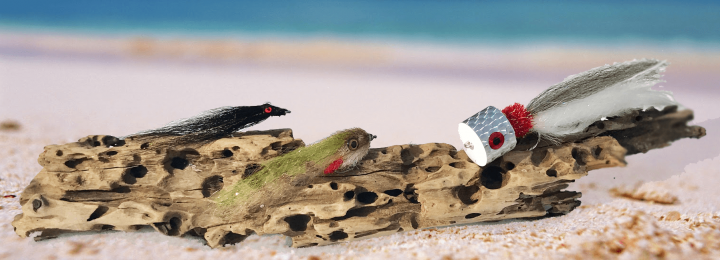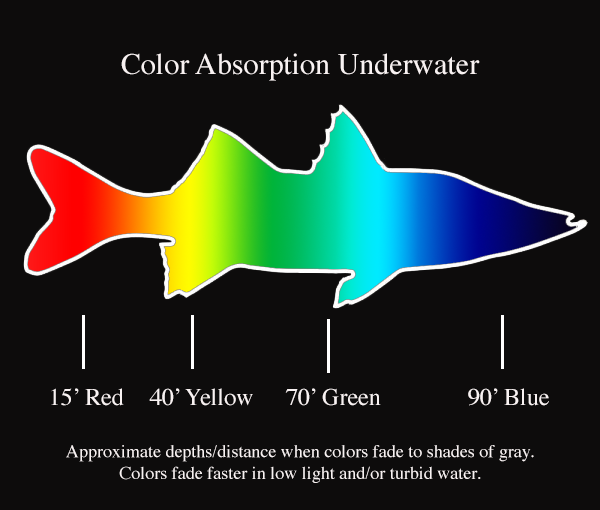Everyone has their go-to lure or fly, that certain color and pattern that always gets the job done. But why is that one lure so effective? Is it the color, shape, action or just the fact that you have confidence in it? Undoubtedly it is a combination of all of the above, especially when you consider what the fish sees.
The colors fish can see are limited by the light absorbing characteristics of water as well as the amount of light and the water clarity. In water, the longest color wavelengths are absorbed first. Red is affected nearly immediately, transitioning to a shade of gray within depths of just 15 feet in clear water. The absorption continues in the order of the color spectrum to affect orange, yellow, green and finally blue.
It is important to note color absorption occurs both vertically and horizontally. No matter the depth, red will appear gray to a fish that is 15 feet away from the lure. The distance is shortened in stained water. Conversely, with blue being visible to about 90 feet in clear open water, it will show up pretty well.
So does that mean color has little bearing? Absolutely not; while colors might not pop out brightly and vivid, they have a profound effect on contrast. This might be of even more importance in fishing. Many anglers have discovered that dark colors work better at night, in low light and in dirty water. This may seem counter-intuitive, but consider that fish see the contrast of a bait to its surroundings. Using baits with two colors boosts the contrast when fishing in turbid water. Colors, shapes, and patterns are likely more important when fishing a particular run. If you are fishing the mullet run or a menhaden migration, matching the natural appearance of the food is pretty important.
How to put this to use when choosing lure colors:
Black is generally the most visible color and creates the best contrast in low visibility.
- Create contrast by using dark colors next to light colors. In dirty water or low-light situations, more contrast is better. Bright clear conditions call for less contrast.
- When using lures deep, use blues and greens as they are the last colors absorbed.
- Consider the visible colors of natural prey at the depth you will be fishing and match that, not the surface colors.
Studies show that fish react to specific colors. Maybe it is a color that occurs during mating or a color that triggers another response. However, what fish see and react to varies species to species. Also, unlike humans, fish can see ultraviolet light, which leads to options when tying flies or using skirted lures. Many materials can bring this into play.
There is no doubt that color plays an important role in lure selection. Utilizing colors that show up at the depth you are fishing is a good strategy. Also, use colors that create contrast and make your bait visible under the conditions you are fishing.
Will Robinson is an accomplished tournament angler and has been writing and hosting fishing shows for nearly two decades.

 Black is generally the most visible color and creates the best contrast in low visibility.
Black is generally the most visible color and creates the best contrast in low visibility.